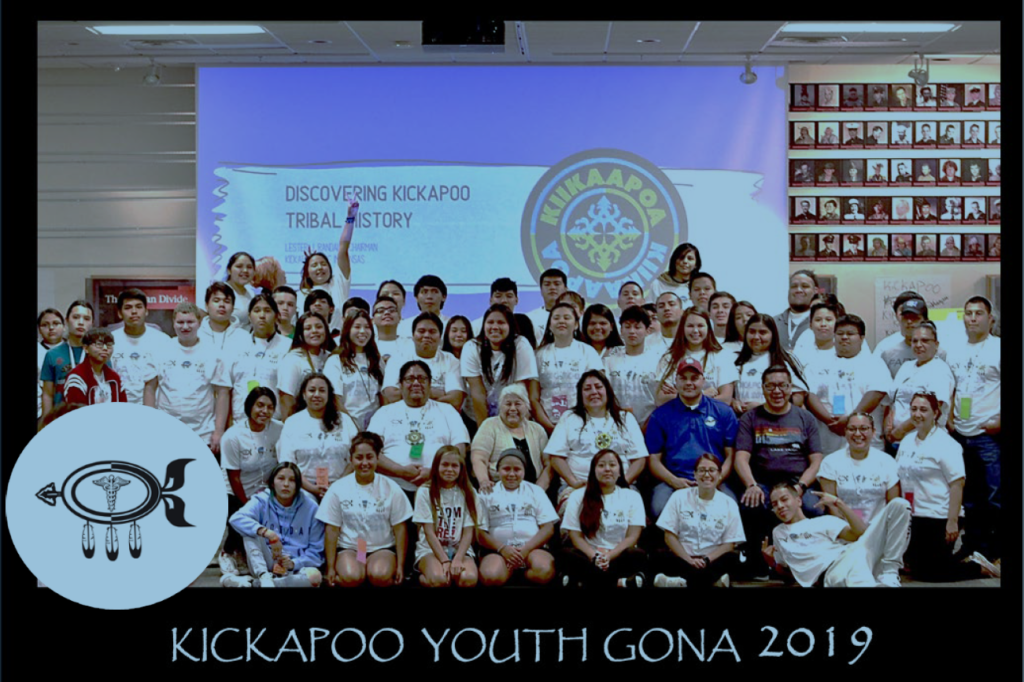History was made on July 30, 2019-August 1, 2019 for the Kickapoo Tribe, as 92 individuals, including youth, tribal elders, leaders, and chaperones, from Kansas, Texas, and Oklahoma assembled to participate in their very first
Gathering of Native Americans (GONA).
GONA is a culture-based planning process, where community members gather to address community-identified issues in an interactive way. The purpose of GONA is to empower and support tribes by reflecting on cultural values, traditions, and practices, and by emphasizing the four themes of belonging, mastery, interdependence, and generosity. The GONA is a roadmap for a journey of healing and transformation—healing the past and building the future. The journey itself will need to be traveled by all members of the community. Ultimately, this journey is about re-establishing a safe, supportive, and nurturing community for Native youth to thrive.
Kickapoo Youth, ages 13 to 24 years old, we’re encouraged to evaluate feelings of connectivity to their communities and Kickapoo culture. They were asked questions before GONA to identify a baseline. The Kickapoo youth from all three tribes reported feeling 57% connected to their community and 62% connected to their culture. They identified community strengths as programs & activities, boys & girls clubs, sports & recreation, and lastly, jobs. When asked to name things they would like to see their respective communities do better, youth identified sports & recreation, programs & activities, culture & language, and financial support. Of all registered participants, 48% said they were most excited to learn more about their culture, language, and history, while an additional 17% said they were most excited about being able to meet new people and make new friends.
During their time at GONA, the youth were given opportunities to learn more about Kickapoo history, historical trauma, the Kickapoo language, wellness, healing, and wholeness, teamwork, collaboration, communication, encouragement, affirmation, commitment, overcoming their pasts, as well as the four GONA themes. They were encouraged to lead the conversations, ask questions, meet and encourage other youth, and to commit to being part of the change as they went back home. They learned together, developed team names, logos, and cheers together, shared meals together, identified goals together, processed their history and historical trauma together, created healing trees together, and made gifts in order to give back together.
After the event came to a close, Kickapoo Youth was asked, once again, to evaluate their feelings of connectivity to their communities and culture. This time, youth from all three tribes reported a 20% increase in community connectedness and a 17% increase in cultural connectedness. When asked at the end of the event about how strongly they felt they had learned about Kickapoo culture, language, and history, youth “agreed” across the board that they had learned all three of these things while attending the GONA (in rank order from the thing they felt most strongly that they had learned about to the least: 1) Kickapoo history; 2) Kickapoo culture; and 3) Kickapoo language). Youth also all generally “agreed” that their Kickapoo family grew while attending the GONA (made new friends and connections with youth from other Kickapoo tribes). Many asked when the next GONA would be, and which tribe would host it next. Overall, the facilitators, chaperones, planning committee, and youth all believed this event to be both successful and historical.

